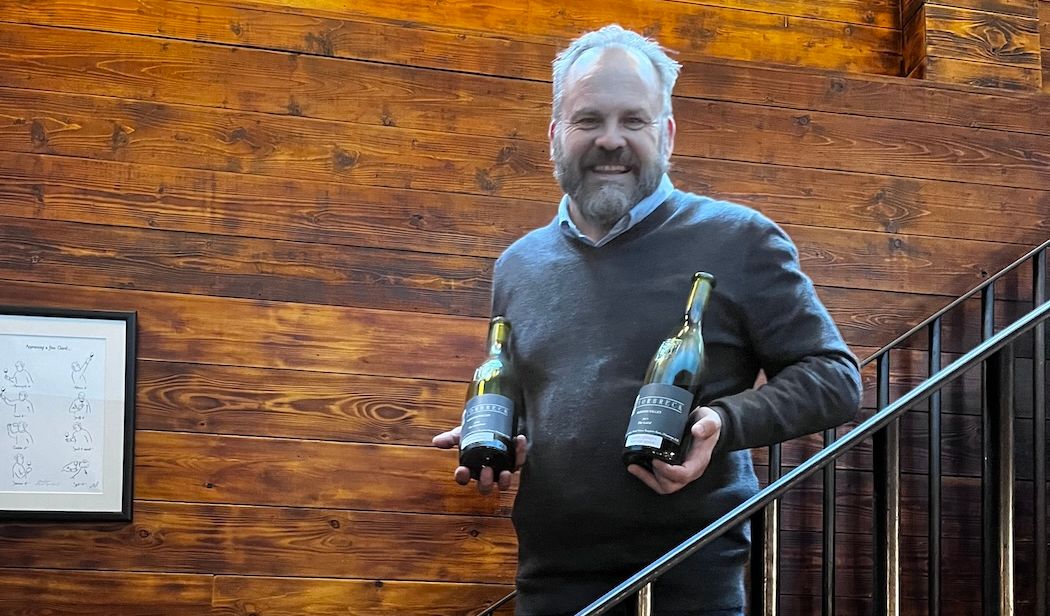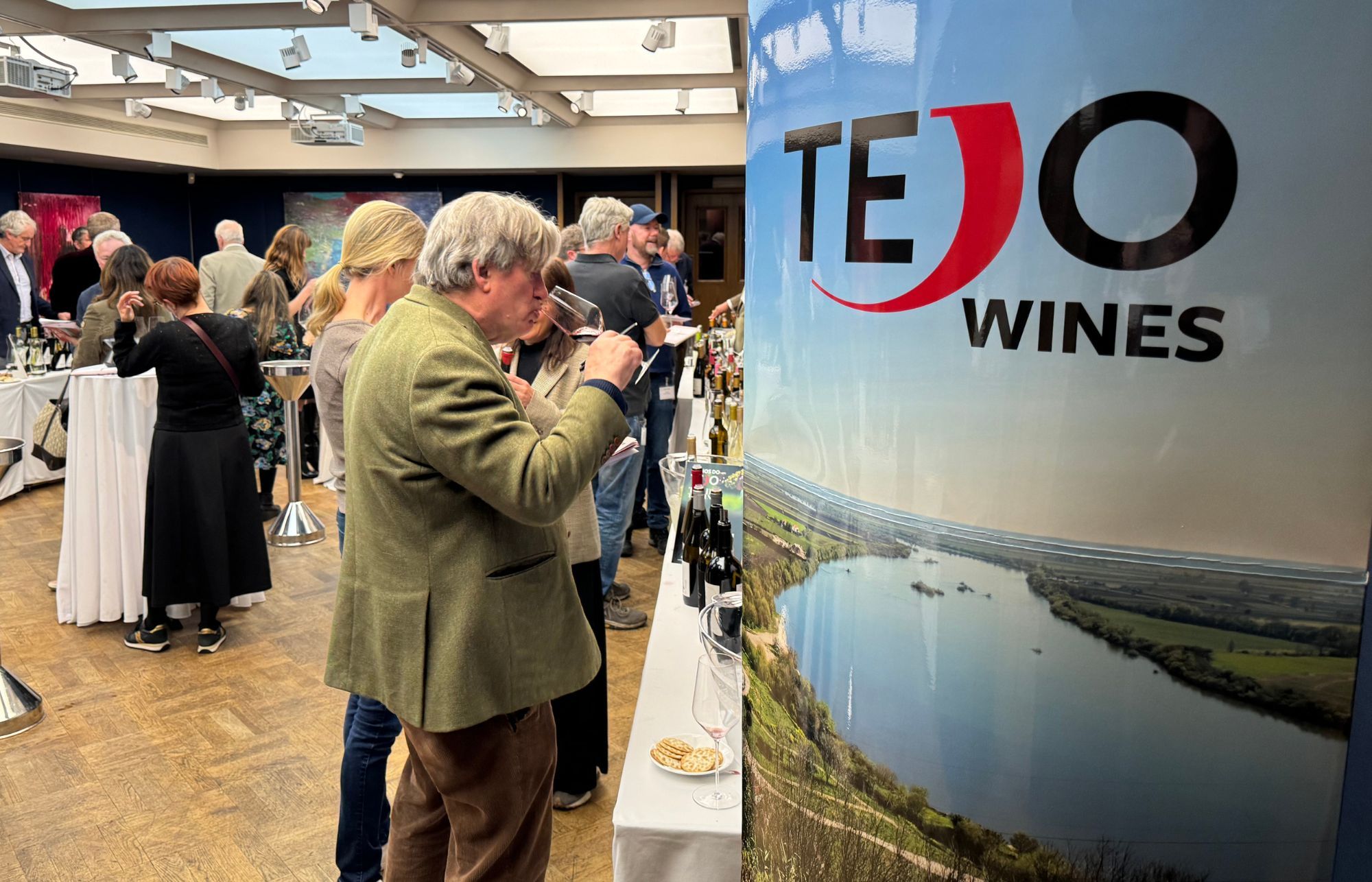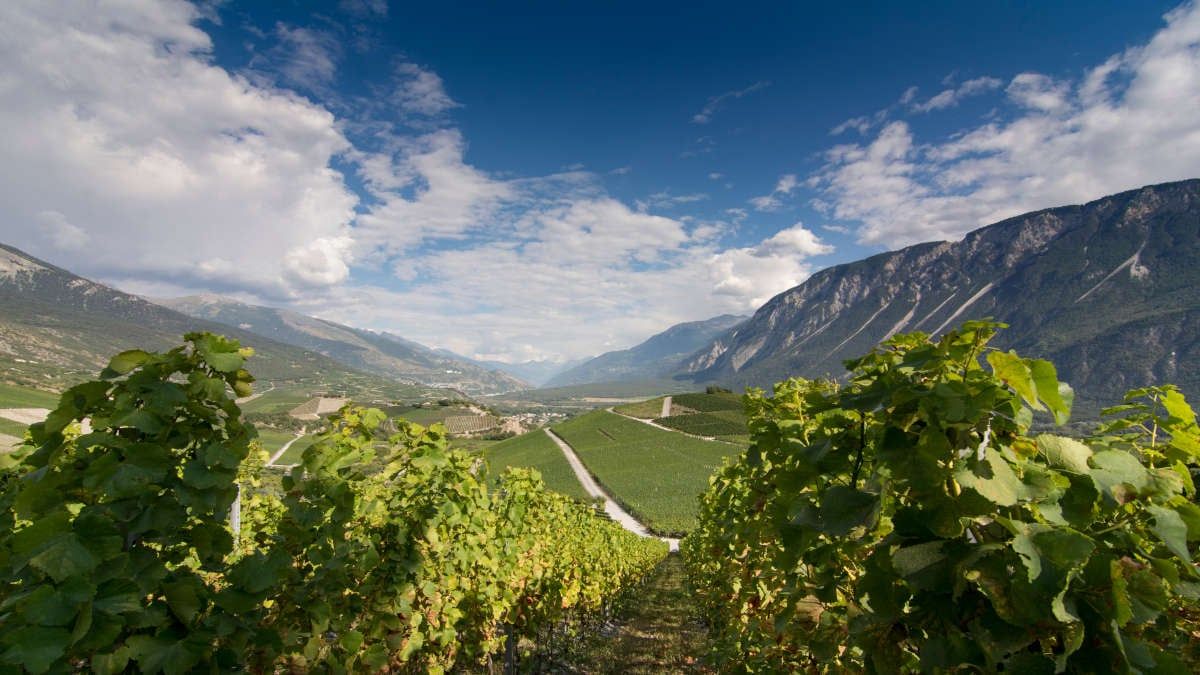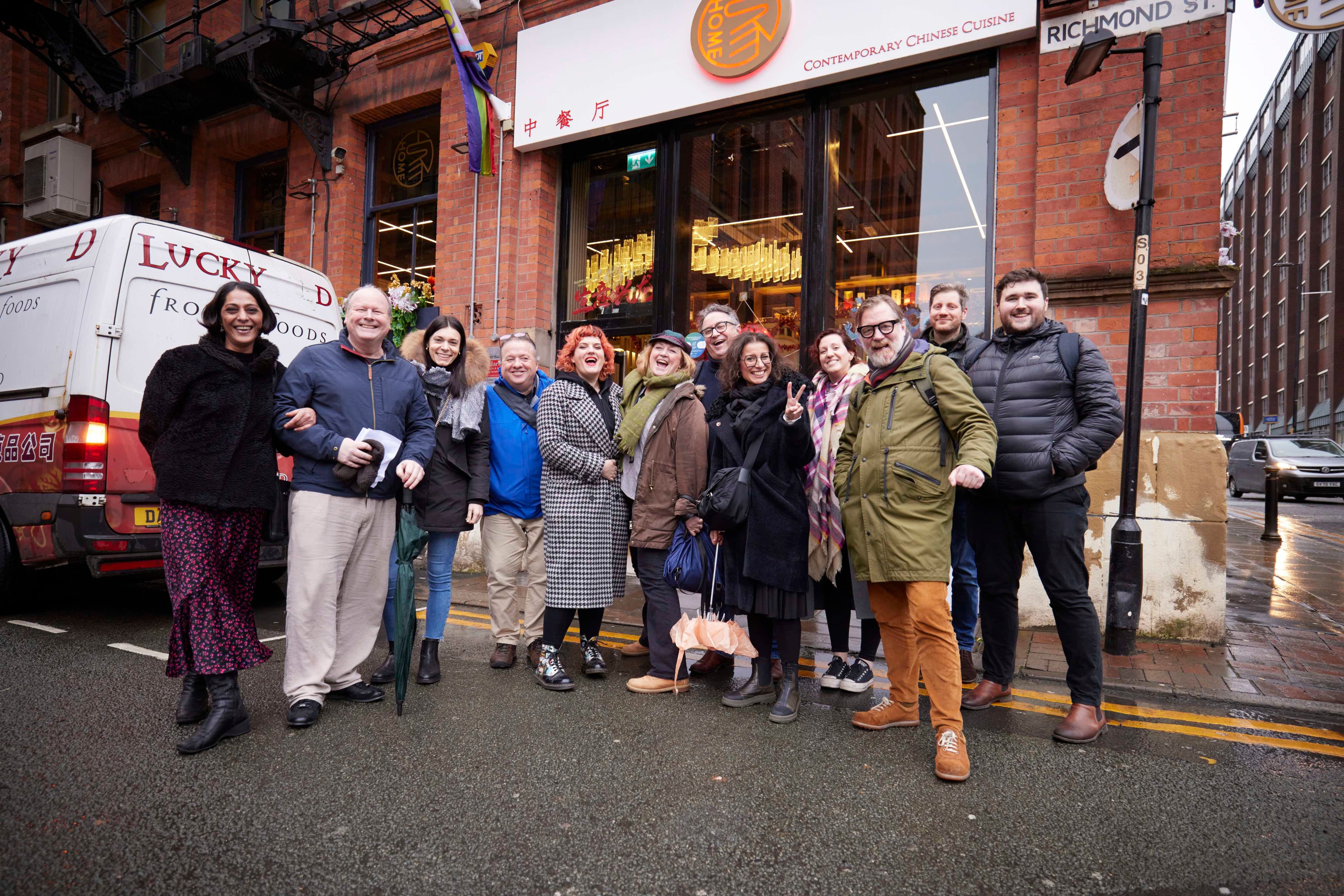Samantha O’Keefe, owner-winemaker of Lismore Estate Vineyards in the Overberg district of the western Cape, vividly remembers the excitement she felt when Wines Of South Africa called her ahead of a European trip to meet buyers.
“It was when WOSA was run by the Benelux girl, who rang and said she wanted me to do a tour called ‘South Africa on the Edge.’ I immediately thought that was so cool - to join those wineries who defy marginal or extreme viticulture to produce fine wines.”
Lismore is deservedly one of those, for it was only thanks to O’Keefe that the sub-appellation - or ward - of Greyton was founded in the early millennium.
It has required deep reserves of fortitude for her to succeed there, not least after the terrible bushfire that destroyed the winery and her house in 2020. Its remoteness gives it a feel of a frontier estate, and similar to it are other South African wineries ‘on the edge’ that I visited in February - Cederberg, Blue Oystercatcher, Strandveld, Sijnn and Benguela Cove. All have to overcome all manner of difficulties and obstacles that the vast majority of other wineries do not have to concern themselves with.
Hats off to all of their winemakers, but first to O’Keefe, the redoubtable Californian whose recognition by her South African peers culminated in her recent election to chair of the Cape Winemakers Guild.

Sam O'Keefe and assistant winemaker Adele Botha at Lismore
Lismore - the pioneer of Greyton
“I am a pioneer,” Keefe proclaims without any hint of immodesty. “The Greyton wine of origin exists because of me. It is certainly marginal - I don’t irrigate which makes it even more marginal.”
Three of her favoured varietals - Chardonnay, Roussanne and Syrah - are especially awkward customers.
“Cool climate Chardonnay, like here on shale over clay soils, gives a very low yield,” she sighs. “In good years, I might get four tons per hectare but most years it’s two, and in 2023 it was only just over one. But dry-grown fruit gives massive concentration, especially in my reserve Chardonnay.”
It is her Roussanne, though, that O’Keefe calls a thrilling example of a varietal on the edge.
“When you plant something you’re never sure if it will be unique or taste like everyone else’s, which is fine either way but this is unlike anything and that’s very exciting. It’s really an example of this place and this site, and of extreme Roussanne on the edge. It’s very phenolic on its own, so I add a little Viognier and Chardonnay to the blend. The intense tangerine and clove notes are all the terroir of Lismore. It’s planted on one of my coolest slopes, which yields 3.5 tons max. The acidity comes in high, with a pH of 3.3 and TA of 6.4g/l - that’s after 100% malolactic fermentation.”
There is one varietal that is still harder than Roussanne to grow on Lismore’s mountainous terrain, where she does not even entertain thoughts of planting Pinot Noir due to wind and poor soils.
“The estate reserve Syrah is the most extreme,” O’Keefe mused. “This is the most difficult to ripen. My expectations are so low with this that it doesn’t even break my heart. When it comes to marginal, this is the most marginal. There are years where we really struggle to ripen it - it just hangs and hangs and hangs. The phenolic ripeness is there but not the physiological ripeness. It’s super floral, and really a wine of place with such low yields.”
Cederberg – 1000 metres in the mountains
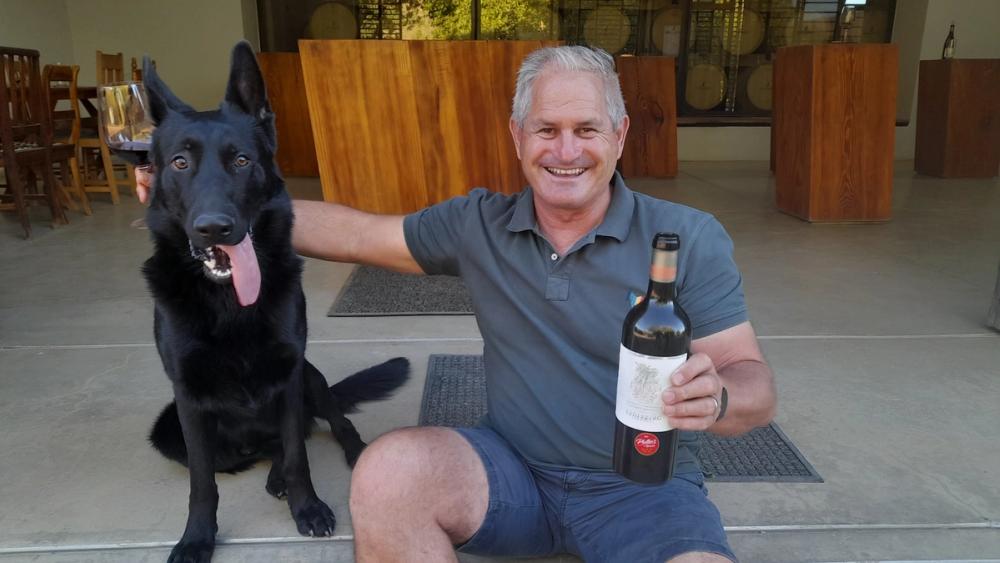
"Getting the right stuff in the right places": David Nieuwoudt & Tux
Even higher than Lismore are the 72 hectares of Cederberg vineyards, tucked away at over 1000 metres in the spectacularly rugged Cederberg mountain wilderness area near Clanwilliam, 250km north of Cape Town.
Owner-cellarmaster David Nieuwoudt’s great, great grandfather settled there in 1893, with his grandfather the first to plant vines in 1973, but viticulture remains an extreme challenge on rocky soils where frost is a perennial issue. Five frost fans, which cost R1.2m each (around £50,000), have been installed with more ordered.
One good thing about the frost is that it kills off grass but not the fynbos cover crop, leaving natural predators like the aphid-eating dragon flies a favoured habitat. Leafroll virus has been eradicated since its principal carriers, mealybugs, were killed off by Danish wasps, specially imported in batches of 500.
Of all the remote wineries in South Africa I’ve been fortunate to visit, Cederberg is perhaps the most striking. Its unique viticultural mesoclimate, its majestic hiking and mountaineering trails, the beauty of its floral kingdom and stunning nocturnal constellations in the absence of any light pollution have a magnetic pull.
Throw in some of the country’s best Chenin Blanc and Cabernet Sauvignon, as well as the secluded Sanddrif guest accommodation, and you have a gem of a destination.
Nieuwoudt, one of South Africa’s best producers, is adamant he can raise the quality bar much higher.
“We have the advantage of 18 days longer hanging time, so we must farm with late ripening varietals. With our replanting programme and amazing soil mapping, we will start to see the results in the next 5-7 years. This is an amazing Cabernet and Shiraz property. We will lift the quality of the reds by at least 20-25%. It’s just getting the right stuff in the right sites, with the right row directions, wind exposure, clones, rootstock and irrigation exactly when the plant needs it. We’ve gone over to drip irrigation which has made a massive difference.”
As adventurous as he is charismatic, Nieuwoudt also invested in a vineyard site that he describes as by far the coldest place in South Africa where Pinot Noir is grown - Elim, some 200km south-east of Cape Town.
He makes the ten-hour round trip there in a day from Cederberg once a week. His Ghost Corner range features not just outstanding Pinot but also Syrah and Sauvignon Blanc.
“The Pinot is doing very well in the UK,” Nieuwoudt revealed. “It’s Old World in style but modern: perfumed, earthy with beautiful forest floor and red cherry fruit, and a gentle tannin profile.”
Due South: Strandveld and Black Oystercatcher

Conrad Vlok of Strandveld
Also facing extreme viticultural challenges in Elim are Black Oystercatcher and Strandveld Vineyards, the two most southerly wineries in South Africa, and part of the Cape Agulhas Wine Triangle. Both, however, manage to make outstanding wines.
Strandveld’s vineyards, which lie just 5km from the Atlantic Ocean, get buffeted in equal measure by easterly and westerly winds. That helps keep diseases away but Strandveld’s winemaker, Conrad Vlok, says easterlies bring salt burn that corrodes vine leaves, turning them brown or yellow and leading to fruit loss.
His other big problem is the huge flocks of starlings that eat, or spoil through pecking, around 30 tons of grapes a year (about 10% of production). Netting outer rows of vineyards does help but is expensive and does not stop the Cape white-eyes, which get inside the nets.
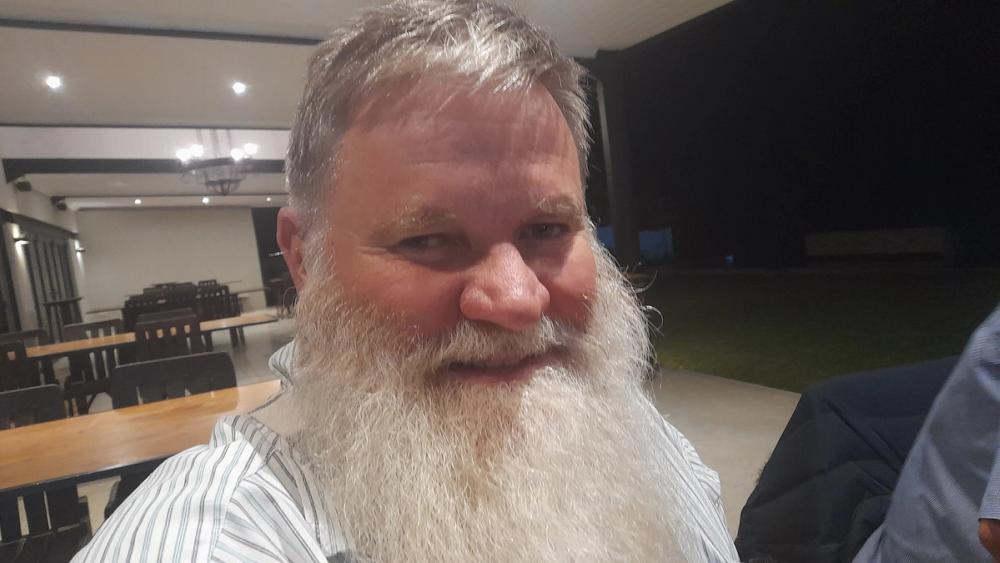
Dirk Human of Black Oystercatcher
Dirk Human, the owner-winemaker of Black Oystercatcher, which is 8km from the Atlantic, has to make do with unusually short internodes (the part of the stem between nodes). Wind stress is the cause.
“Mine are never longer than two inches, compared to 4-6 inches elsewhere,” Human professed. “This affects shoot growth and yield.” Notwithstanding this issue, he makes some of the best Sauvignon Blanc and Semillon in South Africa. Wife Sandra is a brilliant and welcoming cook at their atmospheric restaurant, and their four charming cottages are a great place to stay.
Sijnn – the only winery in the ward
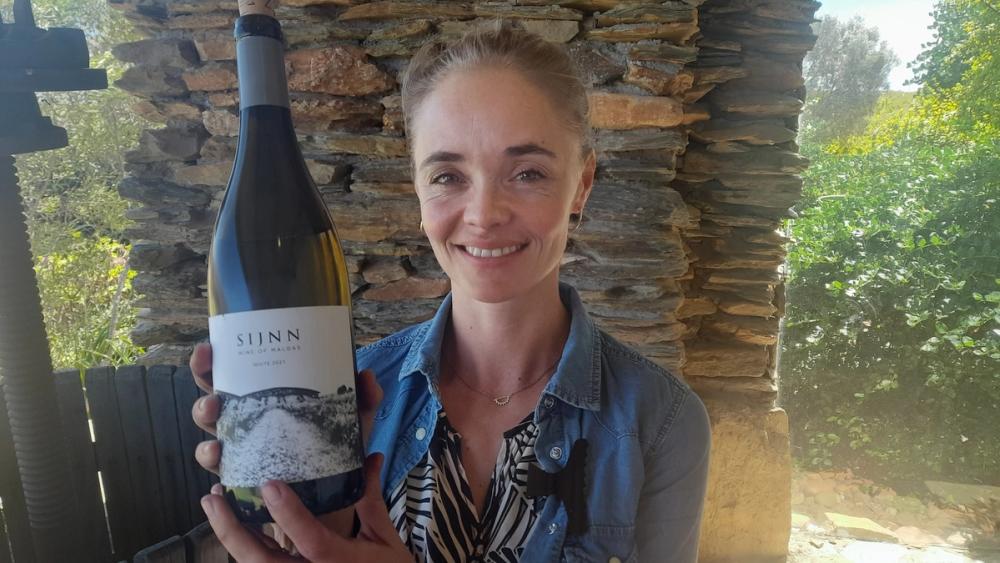
Charla Bosman from the remote Sijnn Wines
Another 100km or so east of Cape Agulhas lies Malgas, a ward so remote that it only has one winery. But it is a top-notch one by the name of Sijnn Wines (pronounced ‘Sane’ and meaning ‘river bank’ in Khoisan).
There is a good reason why no other wineries have been established there - viticulture is extreme. The soils are a challenge and so is the climate, which sees very low rainfall (generally 180-250mm per annum) and near-constant wind.
Well-known Stellenbosch vigneron David Trafford took a chance with the site - an old ostrich and wheat farm on a hill overlooking the Breede river close to the Potberg mountain range - and has been rewarded with exquisite wines that are crafted by one of South Africa’s best young winemakers, Charla Bosman.
“All the farmers around thought David was crazy to plant vineyards, but the land was much cheaper than Stellenbosch, and the investors he phoned all said yes,” she revealed.
“There’s no soil as such - just round riverstones with schist and shale below - which makes it super-difficult to grow vines in. There is some quartz, which is great for Chenin Blanc, and we add some sand, but the wear and tear on equipment is severe. But there’s lots of space in between the rocky soils, with pockets allowing some vines go two metres deep with root sidehairs able to grab onto minerals. That’s why our quality and intensity is so massive,
"The climate is also very difficult with the low rainfall and non-stop south-easterly winds from August till April. And when it does rain, the water just filters through. We can only use water from the river in winter months as it’s too saline for the rest of the year. We can only irrigate two or three times a year for about 4 hours. Everything is bush vine, and yields are only 3-5 tons per hectare.”
Benguela Cove -'where not to grow grapes'

Johann Fourie of Benguela Cove
Difficult sites, however, can prove hard to resist for the best winemakers, such as Johann Fourie. Recruited by Benguela Cove’s British owner Penny Streeter after being named Diners Club Winemaker of the Year in 2015, he has transformed its wines but admits that ocean-hugging Benguela Cove is “a good example, like Sijnn, of where not to grow grapes.”
And yet, the paradox is that the more marginal a site is, the more expressive it can be.
“Extreme altitude, volcanic soils or closeness to the ocean can bring out the personality of a wine, with the site expressing itself better,” Fourie added.
Benguela Cove’s location in the Bot River Lagoon just west of Hermanus is a particularly scenic one but, as Fourie confessed, is extremely dry, has poor soils and is windswept by both wind and salt.
“The salt burn heavily affects young vines, although older ones adapt,” he said. “Constant wind stresses the vine and leads to less efficient photosynthesis, with vines taking longer to establish themselves - four to five years. Even established vines have lower yields as the berries are smaller.” Thanks, however, to Fourie’s expert direction, Benguela Cove’s wines are much sought after, and another example of how marginal viticulture and top-class wines can still be potential bedfellows.
7 exceptional wines from marginal viticultural sites
Benguela Cove, Vinography Chardonnay 2022, Walker Bay, 13.5% abv
Two 300-litre barrels, one new, of this eye-catching Chardonnay from a single clone (CY 277) came from a 1.5 hectare single vineyard site on shale and clay. Vines, planted in 2006, face predominantly south. Thanks to waterbending of the staves, there is no smoke, tar or toastiness imparted by the oak. “This allows you to see the terroir and sense of place,” winemaker Johann Fourie says. Wild yeasts and no malolactic fermentation. Clementine, citrus and cinnamon notes. Pure, clean and long. Imported into the UK by Benguela Cove UK, Horsham.
Black Oystercatcher, White Pearl 2020, Elim, 12.5% abv
Pioneering Elim winemaker Dirk Human has crafted an exceptional blend of (old) wood-aged Semillon (two-thirds) and unoaked Sauvignon Blanc (one-third) from the quartzite, iron ferricrete and shale soils of his Moddervlei Farm. Lovely line of lime acidity from low pH of 3.2 provides freshness to counterbalance complex waxy palate. Impressive fruit purity with minerality and notes of lanolin, dried herbs and citrus blossom. Will age but drinking well now. No UK representation.
Cederberg, Five Generations Cabernet Sauvignon 2021, Cederberg 13.8% abv
For many years now, one of South Africa’s top Cabernets with David Nieuwoudt producing another superb, ‘lekker’ (his word) vintage. Massive concentration and so multi-dimensional, effortlessly absorbing 100% new French oak (18 months). Possesses a plethora of notes - black cherry, blackcurrant, cassis, tobacco and dark chocolate with hints of truffle. Serene harmony with a beautifully polished tannin profile and an endlessly long finish. Benefits from long hang-time (picked 10 April). Imported into the UK by Orbit Wines.
Ghost Corner, Syrah 2021, Elim 13.5% abv
A cool climate classic from David Nieuwoudt that is delicate, elegant and very perfumed (no pepper but spicy with rosemary and sage). Only 7% new oak used with the rest second to fifth fill. Notes of parma ham, strawberry and black olive with white pepper spiciness. Fine soft tannins with impressive length. Small production of 5,200 bottles (low yield of 5 tons per hectare). Imported into the UK by Bibendum.
Lismore Estate Reserve Cuvee Blanc 2022, Greyton 12.5% abv
Intense tangerine notes from this predominantly Roussanne blend with touches of clove and spice. Wonderful intensity of flavour with marked concentration. Remaining 10% made up of Viognier and Chardonnay, added “to polish an otherwise grippy finish” in winemaker Sam O’Keefe’s words. Due to high acidity, she put it through 100% malolactic fermentation. Very low-yielding (3.5 tons per hectare). Imported into the UK by Hallgarten & Novum.
Strandveld, Pofadderbos Sauvignon Blanc 2022, Elim 12.5% abv
A benchmark cool climate example made by Conrad Vlok that is one of South Africa’s best Sauvignons. Notable for its stony intensity and minerality, with blackcurrant lemongrass purity. Delightful lightness of texture with salty freshness and lingering length. Imported into the UK by Ellis of Richmond.
Sijnn Red 2019, Malgas 14% abv
A flagship blend of five varietals, all vinified separately in 20% new and older oak: majority Syrah (31%), Mourvedre, Touriga Nacional, Trincadeira, Cabernet Sauvignon. Silky tannins with gloriously concentrated red and black fruit with forest floor overtones and hints of spice and dark chocolate. Rich with telling acidity and length. Winemaker Charla Bosman and consultant viticulturist Etienne Terblanche take a bow. Imported into the UK by Raeburn Fine Wines.

